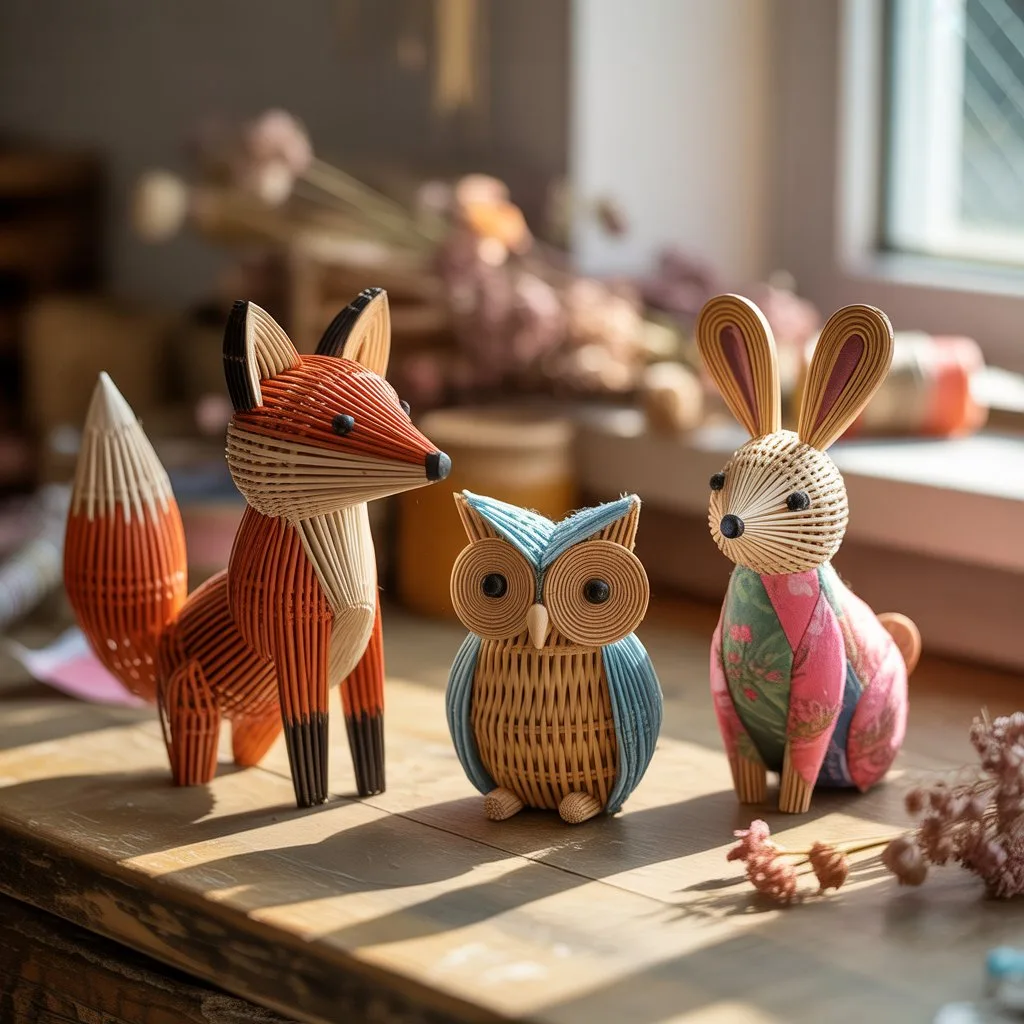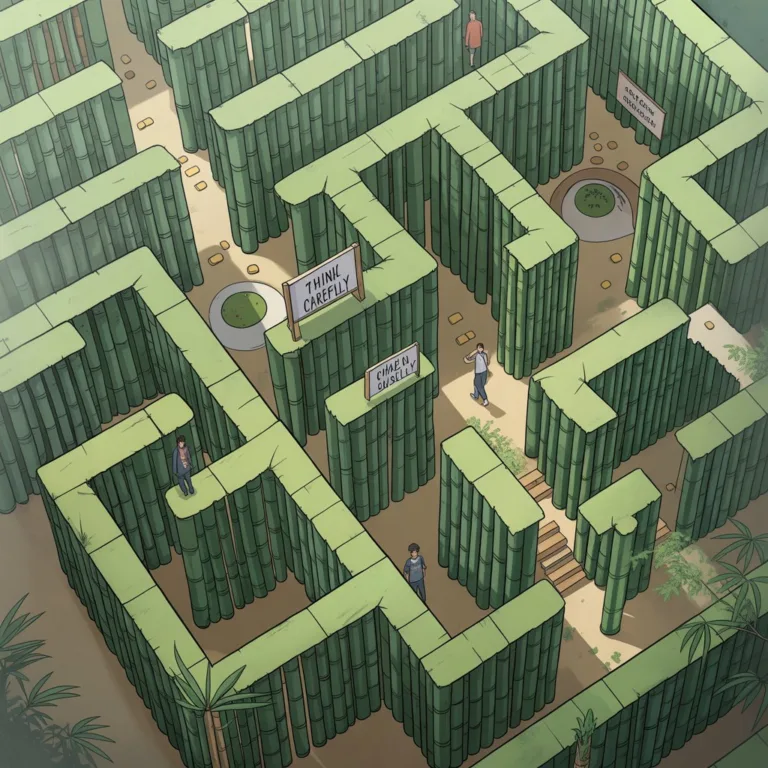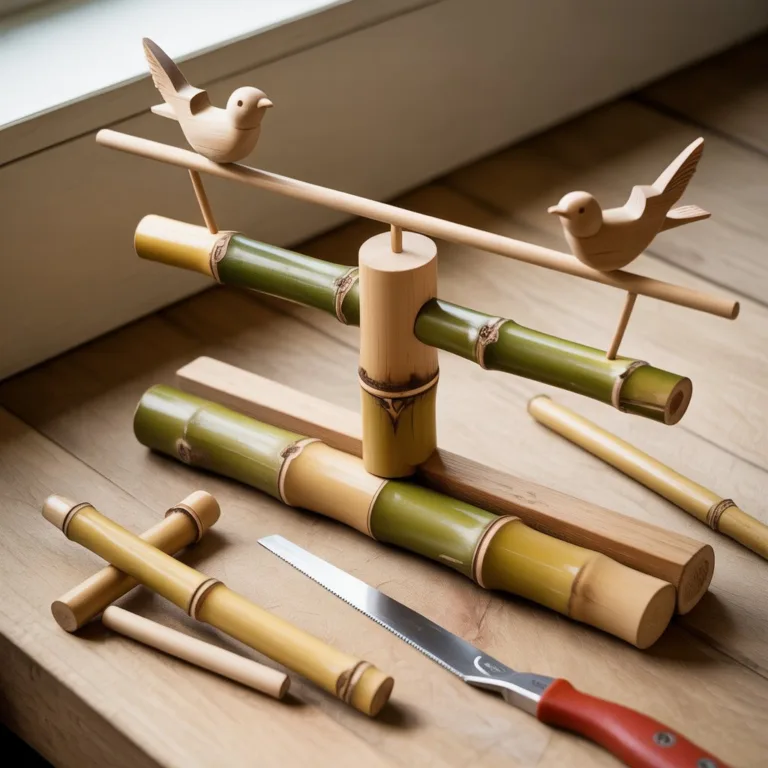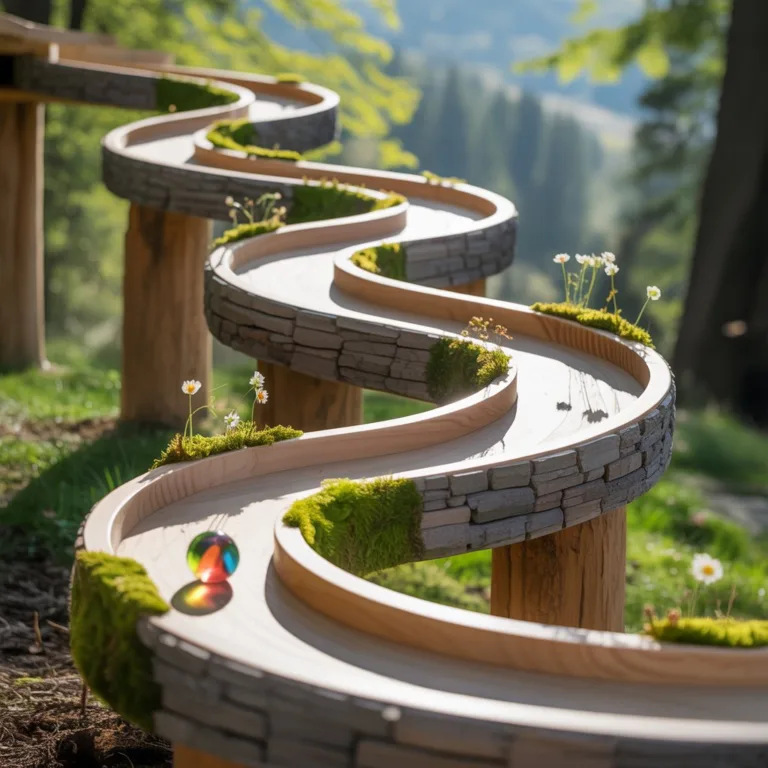Designing animal figures using bamboo and fabric scraps is an innovative way to combine creativity, sustainability, and educational DIY activities. These projects transform simple, often discarded materials into beautiful and functional art, providing participants with hands-on experience in crafting while promoting eco-friendly practices. Using bamboo as a structural element and fabric scraps for decorative details encourages resourcefulness and environmental consciousness.

This form of crafting is suitable for all ages. It fosters artistic expression, problem-solving, and practical skill development. Communities, schools, and hobbyists increasingly use these activities as part of environmental workshops and sustainability-focused projects.
Why Bamboo and Fabric Are Ideal Materials
Bamboo and fabric are both sustainable and versatile:
- Bamboo: A fast-growing, renewable resource. It is lightweight, durable, and flexible, making it perfect for constructing frames, legs, and structural elements of animal figures. Bamboo is naturally resistant to pests and water, making it long-lasting and environmentally friendly.
- Fabric Scraps: Leftover textiles from clothing or upholstery can be repurposed, reducing waste while adding vibrant color, texture, and detail. Fabric allows for creative expression, whether through weaving, stitching, or wrapping around bamboo frames.
Using these materials aligns with sustainable practices, reducing the reliance on synthetic or non-recyclable components. Additionally, the tactile experience of working with natural and reclaimed materials enhances the educational value of crafting.
Planning Your Animal Design
Before starting, it is important to plan the design. Consider the following:
- Animal Choice: Select an animal whose shape is achievable with bamboo frames and fabric. Simpler designs, like birds, turtles, or rabbits, are ideal for beginners. More complex creatures, like elephants or dinosaurs, may require advanced skills and careful planning.
- Size and Proportion: Determine the scale of your figure. Small figures are great for indoor displays or workshops, while larger models can be used for events or educational installations.
- Color Palette: Gather fabric scraps with complementary colors. Natural shades can highlight bamboo’s aesthetic, while bright patterns can add playful and artistic elements.
Sketching the design beforehand helps visualize the structure and decorative elements. It also ensures efficient use of materials, reducing waste.
Building the Bamboo Frame
The frame provides the foundation for the animal figure:
- Cut Bamboo to Size: Measure and cut bamboo pieces for the body, legs, and other essential parts. Use a handsaw or strong scissors designed for bamboo. Smooth any rough edges with sandpaper.
- Assemble Structural Components: Use string, jute twine, or eco-friendly glue to join bamboo pieces. Cross-joint techniques enhance stability, especially for larger figures.
- Test Stability: Ensure the frame stands on its own. Adjust leg length and body balance if necessary. Stability is crucial for safe handling and decorating.
The structural phase teaches participants principles of engineering, balance, and mechanical design in a practical, engaging way.
Decorating with Fabric Scraps
Once the bamboo frame is ready, add personality and color with fabric:
- Wrapping Techniques: Wrap fabric around limbs or the body for coverage. Secure with glue or stitch edges for durability. This technique gives the figure texture and smooth lines.
- Layering: Layer different fabric scraps for patterns, shading, or detail. This allows participants to experiment with color combinations and textures.
- Stitching and Embellishment: Use stitching, embroidery, or fabric glue to add small details like eyes, spots, stripes, or patterns. Encourage creativity while keeping proportions and design in mind.
This phase emphasizes creativity, patience, and fine motor skills, making the project both artistic and educational.
Incorporating Additional Eco-Friendly Materials
Beyond bamboo and fabric, other recycled or sustainable materials can enhance your figures:
- Paper Mache: Use recycled newspapers to add volume or sculpt details. Paper mache can be painted once dry.
- Beads or Buttons: Repurpose old buttons or beads for eyes, decorations, or accents.
- Natural Materials: Leaves, seeds, or small branches can enhance realism and texture.
Combining multiple sustainable materials encourages innovative thinking and provides a richer sensory experience.
Educational Benefits of Crafting Animal Figures
Crafting with bamboo and fabric offers multiple educational outcomes:
- STEM Learning: Participants explore physics, stability, and structural design while building frames.
- Artistic Expression: Students experiment with color, texture, and creativity through fabric decoration.
- Environmental Awareness: Learning to repurpose scraps and bamboo fosters understanding of sustainability and resourcefulness.
- Problem Solving: Participants face challenges in stability, proportion, and design, which they solve through experimentation.
Workshops in schools or community centers often integrate these projects into sustainability or arts curricula.
Community Engagement and Events
Communities can host crafting events focused on bamboo and fabric animal figures:
- Workshops: Organize sessions teaching construction techniques, creative decorating, and eco-friendly practices.
- Exhibitions: Display finished figures in public spaces, libraries, or community centers to raise awareness about sustainability.
- Competitions: Encourage creativity by awarding prizes for originality, structural design, and use of recycled materials.
Events like these foster collaboration, learning, and public appreciation for sustainable crafts.
Safety Considerations
Working with bamboo and tools requires attention to safety:
- Use gloves when cutting or sanding bamboo.
- Supervise children when using scissors, saws, or glue.
- Ensure all structural components are secure to prevent collapse.
- Avoid toxic paints or adhesives.
Promoting safety alongside creativity ensures a positive, educational, and risk-free experience.
Tips for Beginners
To make the project manageable for newcomers:
- Start with simple animal shapes.
- Use lightweight bamboo and soft fabric.
- Focus on stability before decoration.
- Work in teams to combine skills and ideas.
- Experiment with textures and patterns to add personality.
Beginners gain confidence and practical experience while achieving visually appealing results.
Scaling Projects for Larger Events
For schools or community programs:
- Create multiple figures for an exhibition or parade.
- Assign roles: some participants handle bamboo frames, others focus on decoration.
- Integrate sustainability education talks alongside crafting.
- Document the process for future workshops or learning materials.
Scaling up encourages collaboration, planning, and deeper educational impact.
Benefits Beyond Crafting
Crafting animal figures provides long-term value:
- Skill Development: Fine motor skills, spatial awareness, and artistic skills.
- Sustainability Lessons: Awareness of waste reduction, reuse, and recycling.
- Community Building: Collaborative activities strengthen local bonds.
- Cultural Expression: Figures can reflect local wildlife, folklore, or artistic traditions.
Participants leave with a sense of achievement and a tangible piece of sustainable art.
Inspiring Creativity and Curiosity
Each participant brings unique ideas, resulting in a variety of animal designs. The process encourages:
- Critical thinking and experimentation
- Observing patterns and proportions in nature
- Applying theoretical knowledge in a practical way
Creativity and curiosity flourish when participants combine recycled materials, imagination, and hands-on problem solving.
Educational Takeaways
Building bamboo and fabric animal figures reinforces learning outcomes:
- Understanding structures and mechanical principles
- Appreciating sustainable resource use
- Developing aesthetic and artistic judgment
- Improving teamwork, communication, and project planning
These takeaways demonstrate the multifaceted value of hands-on, eco-friendly crafts.
Long-Term Impact
Repeated crafting activities instill lasting habits:
- Using recycled materials in other DIY projects
- Applying problem-solving strategies to daily challenges
- Cultivating an interest in environmental conservation
- Encouraging children and adults to explore sustainable art
Such projects leave a positive impression on individuals and communities alike.
Encouraging Family and Community Participation
Families can participate together, fostering intergenerational learning:
- Children learn basic crafting techniques from adults.
- Adults gain insights into creative problem-solving.
- Collaborative projects strengthen family and community bonds.
Events and workshops become educational and social gatherings, reinforcing sustainable values and collective creativity.
Designing animal figures using bamboo and fabric scraps combines creativity, sustainability, and education in a fun, hands-on activity. Participants learn valuable skills while promoting environmental consciousness and artistic expression. By transforming simple, recycled materials into innovative figures, communities, families, and schools can enjoy engaging, meaningful, and eco-friendly projects.

Elena Mora is a creative educator and eco-craft enthusiast who specializes in bamboo musical instruments and sustainable toys for children. She believes that hands-on learning through play teaches kids about creativity, music, and environmental responsibility.



